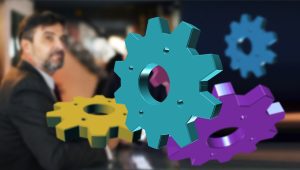
Municipal utility departments are often stuck balancing two conflicting pressures: keep up with increasingly complex regulatory demands while operating with the same limited staff and outdated systems. That pressure cooker has created inefficiencies across the board — but it doesn’t have to stay that way.
Technology has made major strides in helping utility teams automate the most frustrating parts of their day-to-day operations. And yet, many cities still rely on spreadsheets, paper logs, and phone calls to run critical functions.
If you’re still doing any of the following five tasks manually, it’s time to reevaluate. Automation isn’t just a luxury anymore — it’s the key to doing more with less, staying in compliance, and delivering better service to your residents.
1. Tracking Backflow Prevention Compliance
If you’re still managing backflow device testing schedules in an Excel spreadsheet or on a whiteboard, you’re already behind. With state mandates (like those from the Texas Commission on Environmental Quality) requiring annual testing and documentation, missing even a single deadline can cost the city thousands — or worse, put your water system at risk.
The solution is a platform like Flo-Trace, which automates notifications to testers and property owners, manages device test records, and creates a searchable, audit-ready archive. Instead of manually sending out test notices, waiting for physical reports, or playing phone tag with testers, cities can ensure full compliance — with far less effort.
Backflow compliance is low-hanging fruit for automation. It’s predictable, recurring, and consequences for mistakes are steep. There’s no excuse to leave it manual.
2. Receiving and Processing Resident Requests
In many cities, a resident who wants to report a leak or ask a utility-related question still has to call city hall, leave a voicemail, or worse — fill out a form and drop it off in person. Meanwhile, those requests pile up, get lost in email chains, or sit in someone’s in-tray until someone “has time.”
This is a bad look in 2025. Residents expect digital access and near-instant responses. Fortunately, that’s now easy to deliver — without adding headcount.
AI-powered chatbots, like the one offered through LSPS Solutions’ municipal AI services, can answer routine questions, collect information from residents in a structured way, and escalate requests to the right staff automatically. The result: fewer phone calls, faster response times, and a more professional resident experience.
Manual intake doesn’t scale. But automation does — and it never sleeps.
3. Creating and Updating O&M Manuals
Operations and Maintenance manuals are essential for ensuring continuity, safety, and compliance — but let’s face it: most of them are out of date, hard to search, and filled with engineering jargon that only one retired employee truly understood.
Maintaining these manuals manually is a nightmare. It requires pulling together input from multiple departments, formatting everything correctly, and distributing new versions (usually as PDFs that sit unopened in a folder somewhere). And when something goes wrong, no one can find what they need — fast.
That’s why more cities are turning to AI-powered O&M manuals. These digital versions are searchable, dynamic, and capable of pulling in the latest data automatically. They can even be integrated with field devices or GIS platforms to provide location-specific context. Imagine a crew in the field asking, “How do I shut off the valve for this block?” — and actually getting the answer in seconds.
Stop relying on outdated PDFs. Modern infrastructure requires modern documentation.
4. Coordinating Maintenance Scheduling
Every utility department has a maintenance backlog. And every city has at least one operations manager with a stack of post-it notes or a spreadsheet labeled “Work Orders.”
That’s not a system — it’s a liability.
Maintenance needs to be proactive, not reactive. Without real-time scheduling, equipment histories, or automated reminders, you risk missing preventive service that could’ve extended the life of a pump or avoided a costly failure.
Automated scheduling systems (especially those tied into your asset management platform) let you track what’s been done, when it’s due, and who’s responsible — with alerts and logs that hold everyone accountable. You can also tie in performance metrics, costs, and even generate reports for council or TCEQ reviews.
Your utility infrastructure is too valuable to be managed by sticky notes and memory.
5. Managing Paper-Based Forms and Inspections
It’s 2025. Why are we still handing out clipboards?
From hydrant flow testing to cross-connection surveys to field inspections, many utility departments still rely on paper forms that have to be filled out by hand, brought back to the office, scanned, filed, and manually entered into a database (maybe).
That process isn’t just slow — it introduces endless opportunities for human error, lost records, and compliance gaps. It also makes it incredibly difficult to generate reports or identify trends.
Modern mobile apps allow field staff to complete inspections digitally, take photos, attach GPS coordinates, and submit data directly into your system from their phone or tablet. No more double-entry. No more lost reports. And no more wasted time.
Digitizing field operations is one of the easiest ways to improve accuracy and reduce staff burnout.
Final Thoughts
Automation isn’t about replacing your team — it’s about empowering them. When your staff no longer has to waste time on repetitive, manual tasks, they can focus on the strategic, skilled work they were actually hired to do.
More importantly, automation reduces the city’s liability, improves service delivery, and ensures you stay ahead of regulatory changes. With platforms like Flo-Trace and complementary tools offered by LSPS Solutions, you don’t need a six-figure software project to start seeing results.
The manual way might feel familiar — but it’s not the future. And your residents, your regulators, and your staff all deserve better.
